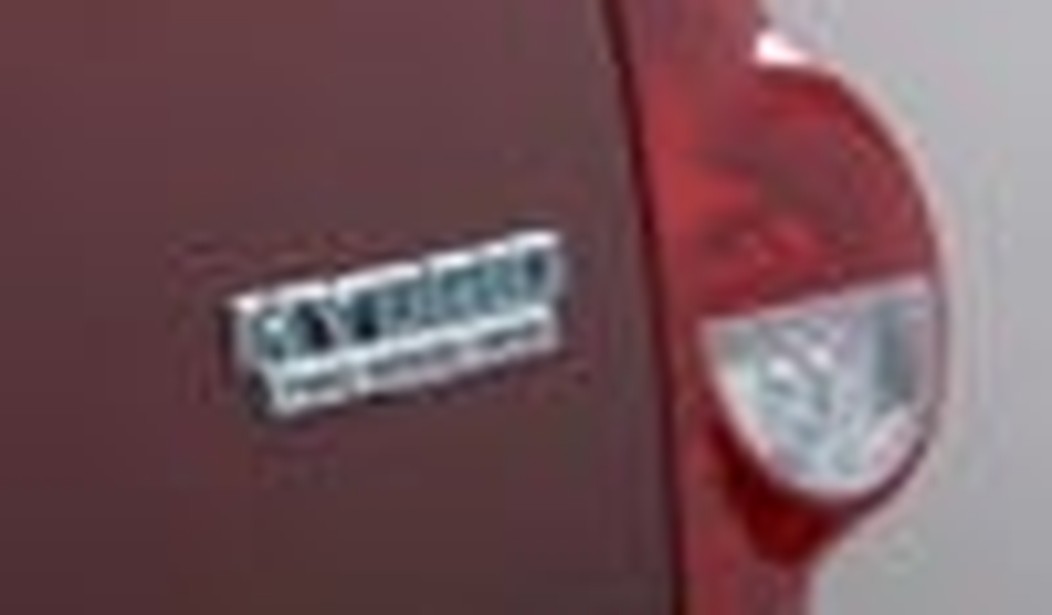Oh, the joys of being one of the elite. How satisfying it must be to have gone to the right schools, to belong to the right clubs, to shop in the right stores, and to enjoy the company of those just like you, of those who think just like you. What a warm feeling it must be to know that you are smarter, better dressed, better looking — in every way, better than those benighted souls who live in flyover country, bitter clingers to God and guns who could not begin to understand your moral superiority.
One of the great benefits of being among the elite is the power to determine what is good and right, and what ought to be, particularly for the lower classes who just aren’t moral or smart enough to know what’s good for them. It is sometimes a burden, laboring ceaselessly to build a society that is socially just and equal. But the elite gladly take on that burden, for the rewards are greater.
A primary tool of the elite progressive (or socialist) is central planning. Not only are the denizens of flyover country incapable of understanding the glory and rightness of socialism. They have the nasty, foolish tendency to ignore or even oppose what the elite know is good for them. They must be forced to be more diverse, equal, tolerant, and socially just. And if they resist, they must be punished, severely.
A perfect example of central planning is the federal Corporate Average Fuel Economy (CAFE) standards. A better example of the folly of central planning is hard to find. CAFE is rife with unintended consequences — and a complete lack of understanding of the science and engineering involved in the numbers picked, apparently out of a hat.
To be completely fair, virtually all governments, even those controlled by Republicans, fall prey, to lesser and greater degrees, to the temptation of socialistic central planning. A central planning scheme begun under a Democrat administration will tend to continue under all that follow it if for no reason beside the self-perpetuating inertia of all federal bureaucracies. The current administration, however, has taken central planning to previously unheard of heights — and therein lies the potential for previously unimagined damage.
CAFE represents governmental control over our lives in ways unimaginable to most Americans. All automakers selling vehicles in the United States must conform to their standard. It’s the average MPG for all vehicles sold by a given car company. If Smith Motor Company’s most popular vehicles are pickup trucks with certified MPG figures of 24 highway (that’s what those numbers on the window stickers of new vehicles mean), it can still meet the CAFE standard by selling its supereconobox sedans, which get 42 MPG — thereby reaching the appropriate average fuel economy for the entire fleet.
Among the first and most destructive edicts of President Barack Obama was the imposition of new CAFE standards. Mr. Obama was accompanied at a May 19, 2009, presser by several Democrat governors, plus Arnold Schwarzenegger and United Auto Workers head Ron Gettelfinger.
According to Autoblog, Mr. Obama announced that the CAFE standards would increase by five percent each year, beginning with 2011, until 2015 — when the CAFE standard would be 35.5 MPG. Mr. Obama made the announcement appear to be a bold move intended to consolidate government and prevent unnecessary duplication between the EPA, the DOT, and California bureaucrats, but his real goals were plainly visible. Mr. Obama said that the agreement was “an historic agreement to help American break its addiction to oil.”
“Obama,” Autoblog added, “said the new rule will save 1.8 billion barrels of oil over the next five years, and is the projected equivalent of taking 58 million vehicles off the road.”
Of course, during the 2008 campaign, Mr. Obama also said:
There are things you can do individually, though, to save energy. Making sure your tires are properly inflated — simple thing. But we could save all the oil that they’re talking about getting off drilling — if everybody was just inflating their tires? And getting regular tune-ups? You’d actually save just as much!
Fast forward to June 22, 2011. According to Eric Loveday at Autoblog Green:
Bumping up federal fuel economy standards to 56 miles per gallon in 2025 would yield fuel savings that offset increased vehicle prices, according to the Center for Automotive Research. However, CAR says, jumping to 62 mpg would increase vehicle prices to such a degree that additional cash needed to buy an auto would exceed the amount of money saved at the pump over a five-year period.
CAFE standards already dictate such things as the prices of new and used vehicles and the kinds of vehicles offered for sale in America. The ultimate issue is: where is the rational balance point between technology and policy? If policy takes primacy, why not simply mandate that all vehicles sold by a given date are capable of at least 100 MPG? If technology is the driving factor, it matters not what the CAFE standard is — if the technology isn’t sufficiently developed to obtain it.
Unfortunately, America is currently saddled with a president whose goals are not creating jobs or enabling the private sector to create wealth, but to impose an anti-business, pro-big government vision of central control, whether the people like it or not. It’s important to remember that for socialists, “the people” are an abstraction, a nameless, faceless mass that labors ceaselessly and happily, striving only to implement the policies of their elite masters. Socialists care little or nothing for the individuals who comprise “the people.”
Does Mr. Obama want to save oil for the sake of thrift or national security? Hardly. He wants energy prices to “necessarily skyrocket”; wants to bankrupt the coal industry; and has appointed Dr. Steven Chu as secretary of Energy — a man who wants to figure out how to raise American gas prices to European levels of $10 per gallon to force Americans to drive less.
Alas, Americans have no “addiction to oil.” An addiction is an uncontrollable compulsion that interferes with normal, rational life. The use of petroleum products is a necessity of modern life. Without it, most Americans cannot do the business of everyday living. Gasoline is not an evil but a useful commodity. Our economy revolves around its use because it is inherently useful. It was, until the advent of Mr. Obama, relatively inexpensive — easy to transport and store in an infrastructure designed for that purpose.
But that hardly matters to those tightening CAFE standards at any cost. Two years ago, the nation’s fuel economy standards went through the first major overhaul since 1985. New rules required the U.S. car fleet to reach the mid-thirties in miles per gallon by 2016. Now, policymakers are working on the next round of regulations for 2017 through 2025. They’re talking about much more stringent numbers — and, automakers argue, much more expensive cars.
The Environmental Protection Agency (EPA) and the National Highway Traffic Safety Administration (NHTSA) intend to announce the new regulations by the end of September, and the four scenarios currently being discussed range from yearly increases in mandated fuel economy of between 3 and 6 percent. Earlier this year, the government told automakers that it is leaning towards a 5 percent increase, which would mean 56 miles per gallon by 2025. But the feds could choose to be even more aggressive; the 6 percent increase translates to a fuel economy standard of 62 mpg.
Center for Automotive Research chief economist Sean McAlinden says that raising the CAFE target to a planned 62 mpg would force consumers to retain their aging autos, resulting in less fuel-efficient vehicles on U.S. roads, increased fuel consumption, and more pollution.
According to a new study issued by the Center for Automotive Research (CAR), adopting the most stringent fuel economy standard of 62 mpg by 2025 could increase the price of a car by $9790 and cause the loss of 1.7 million jobs. CAR says that the only way to meet such a standard would be to have 64 percent of the U.S. fleet utilize the most expensive technology, as in plug-in electric hybrids like the Chevy Volt.
According to the study, today’s low-hanging fruit — less expensive high-efficiency gasoline engines and conventional hybrids — would not be sufficient to meet the standard, and the range limits of pure-electric vehicles prevented their inclusion. “There’s no other distribution of vehicles that would be practical in the market,” CAR president Jay Baron says. And Baron argues that having two of every three cars on the road be plug-in hybrids simply isn’t realistic. “It would be way too expensive and the industry would collapse or implode,” he says, “so we don’t see 62 miles per gallon as being viable.”
CAR’s report has incited vehement opposition from the International Council on Clean Transportation, an independent nonprofit that provides research to environmental policy makers in the transportation sector. In a letter to Baron, ICCT executive director Drew Kodjiak and program director John German criticize the report for basing its assumptions on a 2010 study by the National Academy of Sciences that assessed only near-term, currently available technologies. “The 2010 NAS report doesn’t include technologies currently in development that will be available and widespread by 2025,” German says. He and Kodjiak wrote that CAR also dramatically overstates the increase in car prices and underestimates the fuel savings and emissions reductions from the CAFE standards.
CAR’s estimates vary substantially from what the government predicted in its own analysis last October. The EPA predicted that the country could meet a 62-mpg standard by 2025 at a cost of $3000 per vehicle, and do it with a fleet made up of 55 percent of the less expensive conventional hybrids (the CAR report included no conventional hybrids) and only 2 percent of the plug-in electric hybrid vehicles. Baron says the EPA’s assessment issued in October “was overly influenced from the environmental side and was underrepresented by the industry side, which is why their estimates are so different.”
However, Bill Charmley, who works for the EPA’s assessment and standards division, says that the EPA chastised an earlier version of the CAR report for “indisputable” fundamental math errors. Charmley had not yet had a chance to review the final CAR report, but says the EPA’s technology estimates reflect millions of dollars of investment and the work of roughly 50 employees who have worked full-time on this issue for four years. Though he wouldn’t discuss details of the upcoming proposal, he said it’s likely that it will include periodic reviews of the standard as it’s phased in to assess the industry’s progress.
One thing is certain: Our cars will become more fuel-efficient regardless of what buyers demand. This is the government talking. These regulations have the potential to change what we drive, either by forcing automakers to make smaller, lighter cars or by adopting electrification strategies that will increase the price. Expect the debate over just how much it will increase the price of our cars to heat up this summer.
ALSO READ: Obama’s Regulatory State Marches On









Join the conversation as a VIP Member